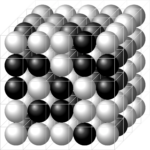Robotics, once a domain of science fiction, has become an integral part of our technological landscape. From industrial manufacturing to healthcare, robotics is revolutionizing how we live and work. This blog post delves into the basic principles and theory of robotics, explores its expansive scope, and examines the transformative impact of AI and vision technology on this dynamic field.

Basic Principles of Robotics
At its core, robotics involves the design, construction, operation, and use of robots. Robots are programmable machines capable of carrying out a series of actions autonomously or semi-autonomously. The basic principles of robotics encompass several key components:
1. Sensors: These devices allow robots to perceive their environment. Sensors can detect light, sound, temperature, pressure, and other physical properties, providing essential data for the robot to process.
2. Actuators: Actuators are the components that move the robot’s limbs or parts, enabling interaction with the environment. They convert electrical signals into physical movement.
3. Control Systems: These systems process sensor data and determine the robot’s actions. Control systems can be simple, like an on/off switch, or complex, involving algorithms that allow for sophisticated decision-making.
4. Power Supply: Robots require a reliable power source to operate. This can range from batteries to renewable energy sources, depending on the robot’s application and design.
5. Programming: Robots are programmed to perform tasks. This programming can be static, where tasks are predefined, or dynamic, allowing the robot to learn and adapt to new situations.
Theory of Robotics
The theory of robotics is grounded in several interdisciplinary fields, including computer science, mechanical engineering, electrical engineering, and cognitive sciences. Key theoretical concepts include:
1. Kinematics and Dynamics: These principles deal with the motion of robots. Kinematics focuses on the movement without considering forces, while dynamics considers forces and torques.
2. Control Theory: This field studies how to manipulate the inputs of a system to achieve the desired effect on its outputs. In robotics, control theory is essential for ensuring precise and accurate movements.
3. Artificial Intelligence: AI algorithms enable robots to process data, learn from experiences, and make decisions. Machine learning, a subset of AI, is particularly influential in developing autonomous robots.
4. Path Planning and Navigation: This involves determining the best path for a robot to take in its environment, ensuring it can move from point A to point B efficiently and safely.
Scope of Robotics
The scope of robotics is vast and continually expanding. Some of the primary areas include:
1. Industrial Robotics: Robots are widely used in manufacturing for tasks such as assembly, welding, painting, and material handling. They improve efficiency, precision, and safety.
2. Medical Robotics: Robots assist in surgeries, rehabilitation, and patient care. Surgical robots, for example, allow for minimally invasive procedures with higher precision.
3. Service Robotics: These robots perform tasks that assist humans, such as cleaning, delivery, and customer service. Examples include vacuum cleaning robots and robotic waiters.
4. Exploratory Robotics: Robots are used for exploration in environments that are hazardous or inaccessible to humans, such as deep-sea exploration, space missions, and disaster response.
5. Personal Robotics: These robots are designed for use in homes and personal environments, providing companionship, assistance, and entertainment.

AI Technology in Robotics
Artificial Intelligence is a cornerstone of modern robotics, driving advancements in autonomy and functionality. Key AI technologies in robotics include:
1. Machine Learning: Robots use machine learning algorithms to improve their performance over time. By analyzing data and learning from outcomes, robots can refine their actions and make better decisions.
2. Natural Language Processing (NLP): NLP allows robots to understand and respond to human language, enabling more intuitive interactions. This is particularly important in service and personal robotics.
3. Computer Vision: AI-powered vision systems enable robots to interpret and understand visual information. This is crucial for tasks that require object recognition, navigation, and interaction with dynamic environments.
4. Reinforcement Learning: This type of machine learning enables robots to learn through trial and error, optimizing their actions based on rewards and penalties.
Vision Technology in Robotics
Vision technology is a critical component of robotics, providing the “eyes” for robots to perceive and interact with their surroundings. Advances in computer vision and imaging technologies have significantly enhanced robotic capabilities. Key aspects of vision technology in robotics include:
1. Image Recognition: Robots use image recognition to identify objects, people, and environments. This is essential for tasks such as sorting items, detecting obstacles, and performing inspections.
2. Depth Sensing: Depth sensors provide information about the distance and dimensions of objects, enabling robots to navigate and manipulate objects accurately.
3. 3D Mapping: Robots create 3D maps of their environment using vision technology, which aids in navigation and interaction. Simultaneous Localization and Mapping (SLAM) is a common technique used in autonomous robots.
4. Motion Analysis: Vision systems can analyze movement, allowing robots to track and predict the motion of objects and people. This is particularly useful in dynamic environments like manufacturing floors or public spaces.

Conclusion
Robotics is a rapidly evolving field with the potential to transform countless aspects of our lives. By understanding the basic principles, theoretical foundations, and the significant roles of AI and vision technology, we can appreciate the profound impact robotics will continue to have. As technology advances, we can expect robots to become even more integrated into our daily lives, driving innovation and efficiency across various industries. The future of robotics promises a world where intelligent machines work alongside humans, enhancing our capabilities and improving our quality of life.
Robotics is The multidisciplinary study and practice of Designing, Building, Operating, and Utilizing robots is known as robotics. The design and building of robots’ Physical Constructions is under the purview of robotics in Mechanical Engineering, whereas robotics in computer science is concerned with robotic automation techniques.

Pingback: World of Artificial Intelligence: Basics to Future Visions